Related Research Articles
Geoffrey Fitz Peter, Earl of Essex was a prominent member of the government of England during the reigns of Richard I and John. The patronymic is sometimes rendered Fitz Piers, for he was the son of Piers de Lutegareshale, a forester of Ludgershall and Maud de Manderville.
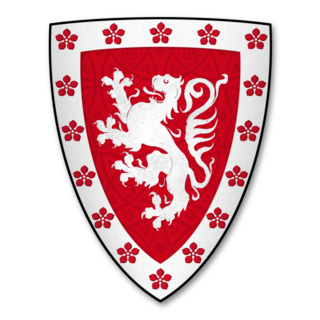
Patrick de Dunbar, 9th Earl of March, was a prominent Scottish magnate during the reigns of Robert the Bruce and David II.

Clan Hay is a Scottish clan of the Grampian region of Scotland that has played an important part in the history and politics of the country. Members of the clan are to be found in most parts of Scotland and in many other parts of the world. However, the North East of Scotland, i.e. Aberdeenshire (historic), Banffshire, Morayshire and Nairnshire Nairn (boundaries), is the heart of Hay country with other significant concentrations of Hays being found in Perthshire, especially around Perth, in the Scottish Borders, and in Shetland.

Thomas Hamilton, 1st Earl of Haddington, designated before his peerage as 'of Drumcarny, Monkland, and Binning', was a Scottish administrator, Lord Advocate, judge, and Lord Lieutenant of Haddingtonshire.
WilliamIII, 5th Earl of Ross was a fourteenth-century Scottish nobleman. He was the fifth O’Beolan earl of Ross, descending from the founder of the line, Fearchar of Ross.
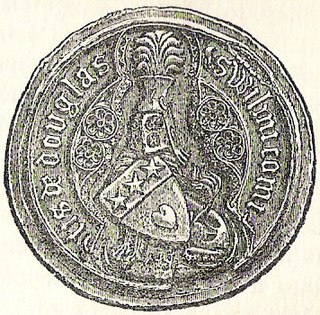
William Douglas, 1st Earl of Douglas was a Scottish nobleman, peer, magnate, and head of the Black Douglas family. Under his leadership, the Black Douglases continued their climb to pre-eminence in Scottish politics begun under his uncle, Sir James the Good, as well as their military dominance of the south of Scotland.
The Justiciar of Scotia was the most senior legal office in the High Medieval Kingdom of Scotland. Scotia in this context refers to Scotland to the north of the River Forth and River Clyde. The other Justiciar positions were the Justiciar of Lothian and the Justiciar of Galloway.
The Justiciar of Lothian was an important legal office in the High Medieval Kingdom of Scotland.

Clan Lindsay is a Scottish clan of the Scottish Lowlands.
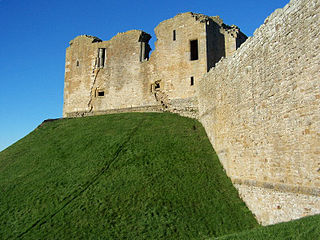
Freskin was a Flemish nobleman who settled in Scotland during the reign of King David I, becoming the progenitor of the Murray and Sutherland families, and possibly others.

Sir Robert de Lawedre (Lauder), Knt., of Quarrelwood, Edrington, and the Bass was Justiciar of Scotia, a Scottish soldier of great prominence and Captain of Urquhart Castle. He is recorded by Fordun, in his Scotichronicon, and in Extracta ex variis Cronicis Scocie as "Robertus de Lavedir 'the good'"
Sir David de Lindsay, Lord of Crawford and Ercildum, known as "the elder" to distinguish him from his son, was an Anglo-Scottish baron of the 12th and 13th century.
Thor of Tranent, also known as Thor, son of Sveinn or Thor, son of Swain, Lord of Tranent and Sheriff of Lothian, was a landlord and chieftain active in Lothian in the reign of King David I of Scotland. He is attested in a large number of charters during King David's reign in Lothian, both as a charter witness on charters granted by other patrons and on charters he himself issued. His name appears either as Thor son of Sveinn or "Thor of Tranent", the latter appellation deriving from his ownership of the "barony" of Tranent, East Lothian, lands including a wide area around the modern town, including, for instance, Prestonpans.
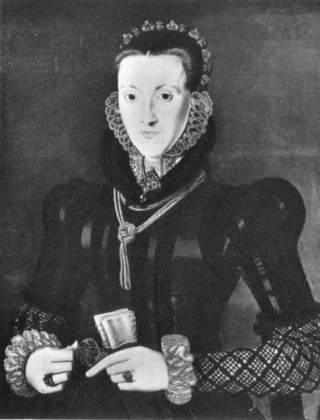
Agnes Keith, Countess of Moray was a Scottish noblewoman. She was the wife of James Stewart, 1st Earl of Moray, regent of Scotland and the illegitimate half-brother of Mary, Queen of Scots, making her a sister-in-law of the Scottish queen. As the wife of the regent, Agnes was the most powerful woman in Scotland from 1567 until her husband's assassination in 1570.
Sir David Olifard was the first recorded Justiciar, governing the southern half of Scotland south of the rivers Forth and Clyde. Olifard was godson to King David I of Scotland, whose life he saved at the Rout of Winchester in 1141. Olifard is the first known chief of Clan Oliphant today.
Sir David de Graham of Dundaff was a 13th-century Scottish noble.
Sir Geoffrey de Mowbray, Justiciar of Lothian, Baron of Dalmeny, Lord of Barnbougle and Inverkeithing was a 13th-14th century Scottish noble.
Sir Walter de Moray, Lord of Petty, Bracholy, Boharm, Arteldol and Bothwell, Justiciar of Lothian was a 13th-century Scottish noble.
Walter de Lindsay, Lord of Lamberton and Molesworth, Fordington and Ulceby, Justiciar of Lothian, Sheriff of Berwick was a Scottish noble, who held lands in Scotland and England.
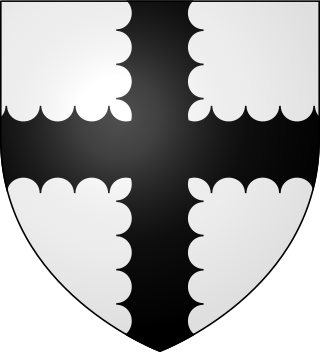
William St. Clair, 6th Baron of Roslin was a Scottish nobleman of the late 13th century.
References
- Burke, John (1868). Burke's Genealogical and Heraldic History of the Peerage, Baronetage and Knightage. Vol. 30. Burke's Peerage Limited.
- Fraser, William (2005) [1890]. The Melvilles: Earls of Melville and the Leslies, Earls of Leven (PDF). TannerRitchie Publishing in collaboration with the Library and Information Services of the University of St Andrews. ISBN 1-55429-336-7. OCLC 230755753 . Retrieved 29 July 2022.